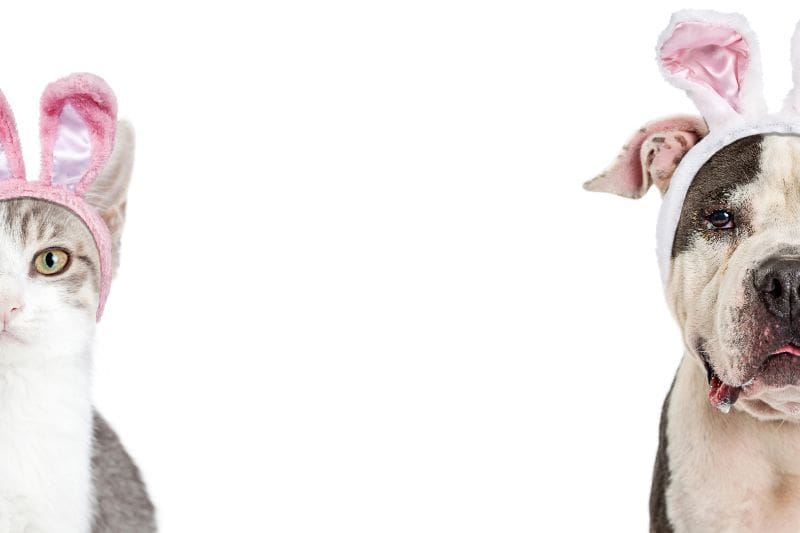Hippity-Hoppity Horror: Avoiding a Veterinary Emergency Through Easter Pet Safety

What’s in the Easter basket this year? Could it be something delicious? Could it also be a pet toxin? The Easter holiday, with its abundance of chocolate, candy, and delicious food, is also a big time of year for pet poison emergencies.
The focus on fun and family togetherness during Easter should be extended to your four-legged family through pet safety measures. It’s actually easy with some awareness and simple actions to keep these Easter foes from being eaten by your furry friend.
A Tisket, a Tasket…Those Easter Baskets
A basket filled with toys and treats, what’s not to like? Your curious pet will also be intrigued and want to investigate, such as:
Easter basket filling – These string-like bits that resemble grass are can be fascinating to cats and dogs. When the strands are ingested, they can get caught in the GI tract and twisted in the intestines, creating a dangerous blockage. Ditch the Easter faux grass and opt for a pretty piece of fabric or something that doesn’t have strings.
Chocolate – This pet toxin is particularly prevalent in homes during this time of year. Chocolate contains caffeine and theobromine, both of which can cause hyperactivity, vomiting, diarrhea, and other symptoms if your pet ingests it. During the Easter holiday, the Pet Poison Helpline reports that poison calls about chocolate raises 200%.
The safest bet is to:
- Avoid Easter grass.
- Be cautious when offering chocolate and chocolate based snacks by keeping them out of your pet’s reach.
- Supervise your children around the candy and chocolate, making sure they don’t drop anything onto the ground.
- Stow Easter baskets filled with treats somewhere safe when not in use.
- Avoid using sugar-free products, as the sweetener Xylitol is in many gums, candies, and baked goods and is extremely dangerous to pets.
Poisonous Plants
Day lilies, Easter lilies, and other members of the Lilium family are considered extremely dangerous to cats. Even the smallest amount eaten can cause kidney failure. Take care not to include lilies in your Easter decor.
Other common toxic plants to avoid include:
- Daffodil
- Narcissus
- Crocus
- Lily of the Valley
- Azalea
- Tulips
- Begonia
- Hyacinth
Before bringing anything into the home or garden, a good idea is to consult an online or book form list of toxic versus non-toxic plants. Switch out those that are risky with pet friendly varieties instead.
Easter Pet Safety and Your Furry Friend
The food, festivities, and traditions of Easter are wonderful, but they can pose risks. Using caution in your decor, baskets, and plants can go a long way in making the holiday a fur-friendly one.
If we can answer questions about Easter pet safety, please call the team at Beverly Hills Veterinary Associates. We wish you a lovely, enjoyable Easter for the entire family.
